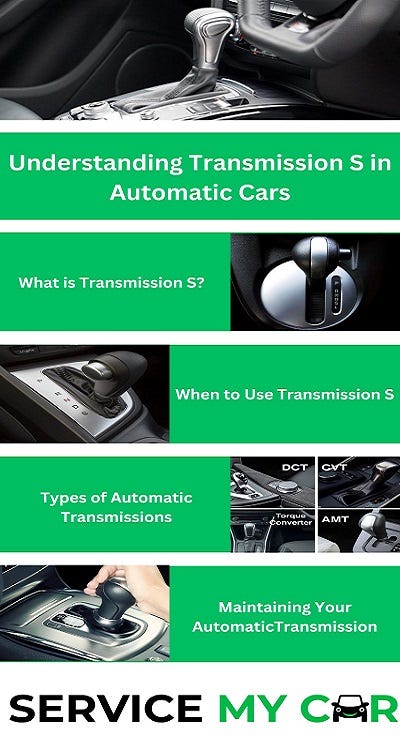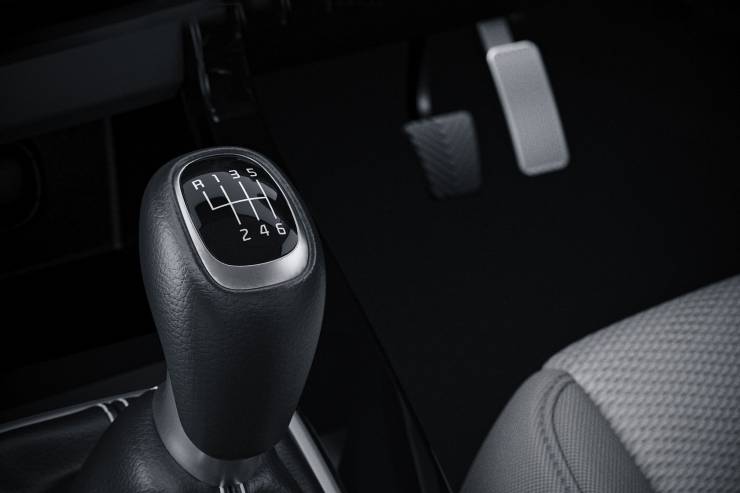
In this comprehensive guide, we will explore the meaning of transmission S in automatic cars, its purpose, and when to use it. We will also discuss the standard gear shift positions and dive into various types of automatic transmissions.
As a driver, you might have noticed the different letters present on the gear shift of an automatic car. Among these letters, one of the most common yet misunderstood modes is the letter ‘S.’
What is Transmission S?
The letter ‘S’ on a gear shift represents the ‘Sports Mode’ in an automatic transmission car. This mode allows the vehicle to have a more dynamic driving experience, with increased throttle sensitivity and a higher RPM range. The transmission S mode is designed to provide a sportier driving experience by holding gears longer, resulting in quicker acceleration and better performance. However, it is essential to understand the function and purpose of this mode to use it effectively and avoid potential issues.
Transmission System Basics
Before diving into Transmission S, it’s crucial to understand the basics of a car’s transmission system. The transmission, also known as the gearbox, is responsible for transferring the engine’s power to the wheels, allowing the vehicle to move. The primary function of the transmission is to deliver the right amount of power and torque to the wheels, ensuring optimal performance and fuel efficiency.
Automatic Transmission Operations
Automatic transmissions are designed to shift gears automatically, allowing the driver to focus on other aspects of driving. They use hydraulic power to change gears and are controlled by an electronic control unit (ECU) that takes into account variables such as speed, throttle position, and driving conditions.
Some of the most common operations of an automatic transmission include: Automatically selecting the appropriate gear based on speed and throttle position.
Shifting at lower speeds when accelerating slowly and at higher speeds when accelerating more quickly.
Downshifting automatically when the gas pedal is floored or when selecting a lower gear.
Maintaining a set gear when shifting to a specific position, such as second gear or transmission S mode.
Standard Gear Shift Positions
Most automatic cars have standard gear shift positions, which include Park (P), Reverse (R), Neutral (N), and Drive (D). These positions are essential for various driving situations and provide the foundation for understanding the additional modes, such as transmission S.
Park (P): This position disengages the transmission from the engine, preventing the car from moving forward or backward. It is the starting position when entering the vehicle and should be used when parking or stopping the engine.
Reverse (R): As the name suggests, this position is used for driving the car backward. When the reverse gear is engaged, the vehicle moves in the opposite direction.
Neutral (N): The neutral position disengages the gears from the engine, meaning the wheels are not driven. This position is used for towing or when the car is stationary but the engine is still running, such as at a traffic light or in a drive-through.
Drive (D): This is the primary position used for driving the car forward. In Drive mode, the automatic transmission selects the appropriate gear based on speed and throttle position, providing a seamless driving experience.
Benefits and Drawbacks of Transmission S
Transmission S offers several benefits for drivers seeking a sportier driving experience. Some of the main advantages of using transmission S mode include:
• Increased throttle response
• Quicker acceleration
• Higher RPM shifts
• Tighter steering
• Improved torque and power output
When to Use Transmission S
Transmission S mode is best suited for specific driving situations, such as on open highways or when additional power and performance are desired. It is ideal for overtaking slower vehicles, climbing steep inclines, or simply enjoying a more engaging driving experience.
However, it is essential to remember that using transmission S mode can negatively impact fuel efficiency and should not be used excessively or in unsuitable conditions.
Types of Automatic Transmissions
There are several types of automatic transmissions available in modern vehicles, each with its unique characteristics and benefits. Some of the most common automatic transmission types include:
Torque Converter Automatic: This is the most common type of automatic transmission, using hydraulic power to shift gears.
Automated Manual Transmission: Also known as a semi-automatic or clutchless manual transmission, this type combines elements of both manual and automatic transmissions.
Dual Clutch Transmission: This high-performance transmission features two separate clutches for even and odd gears, allowing for rapid gear changes and improved performance.
Continuously Variable Transmission (CVT): A CVT uses a system of pulleys and belts to provide seamless gear changes and improved fuel efficiency.
Maintaining Your Automatic Transmission
Proper maintenance is essential for ensuring the longevity and performance of your automatic transmission. Some key maintenance tasks include:
• Regularly checking and maintaining the transmission fluid level and condition.
• Changing the transmission fluid and filter according to your vehicle’s recommended maintenance schedule Inspecting and servicing the transmission cooling system, as overheating can cause damage to the transmission Paying attention to any signs of transmission issues, such as unusual noises, slipping gears, or warning lights, and addressing them promptly.
• Consulting your vehicle’s owner’s manual for specific maintenance recommendations and procedures.
• By following these maintenance tips, you can help ensure your automatic transmission continues to function optimally and provide a smooth, enjoyable driving experience.
Conclusion
Understanding the purpose and function of transmission S in automatic cars is essential for drivers seeking a more dynamic and engaging driving experience. By using transmission S mode appropriately and maintaining your automatic transmission properly, you can enjoy the benefits of improved performance while minimizing potential drawbacks. Remember to consult your vehicle’s owner’s manual for specific guidance on using transmission S mode or maintaining your automatic transmission and get the car transmission repair on time. For more clarification, just ask an expert at Service My Car.
We not only provides transmission repair in Dubai but also provides car services like car repair in dubai, car oil change, car wash, car tyre change, car compressor replacement, car wheel alignment etc.
For any car related needs, you should approach Service My Car. Just book a car service or order a car repair quote online on our website or app now.

